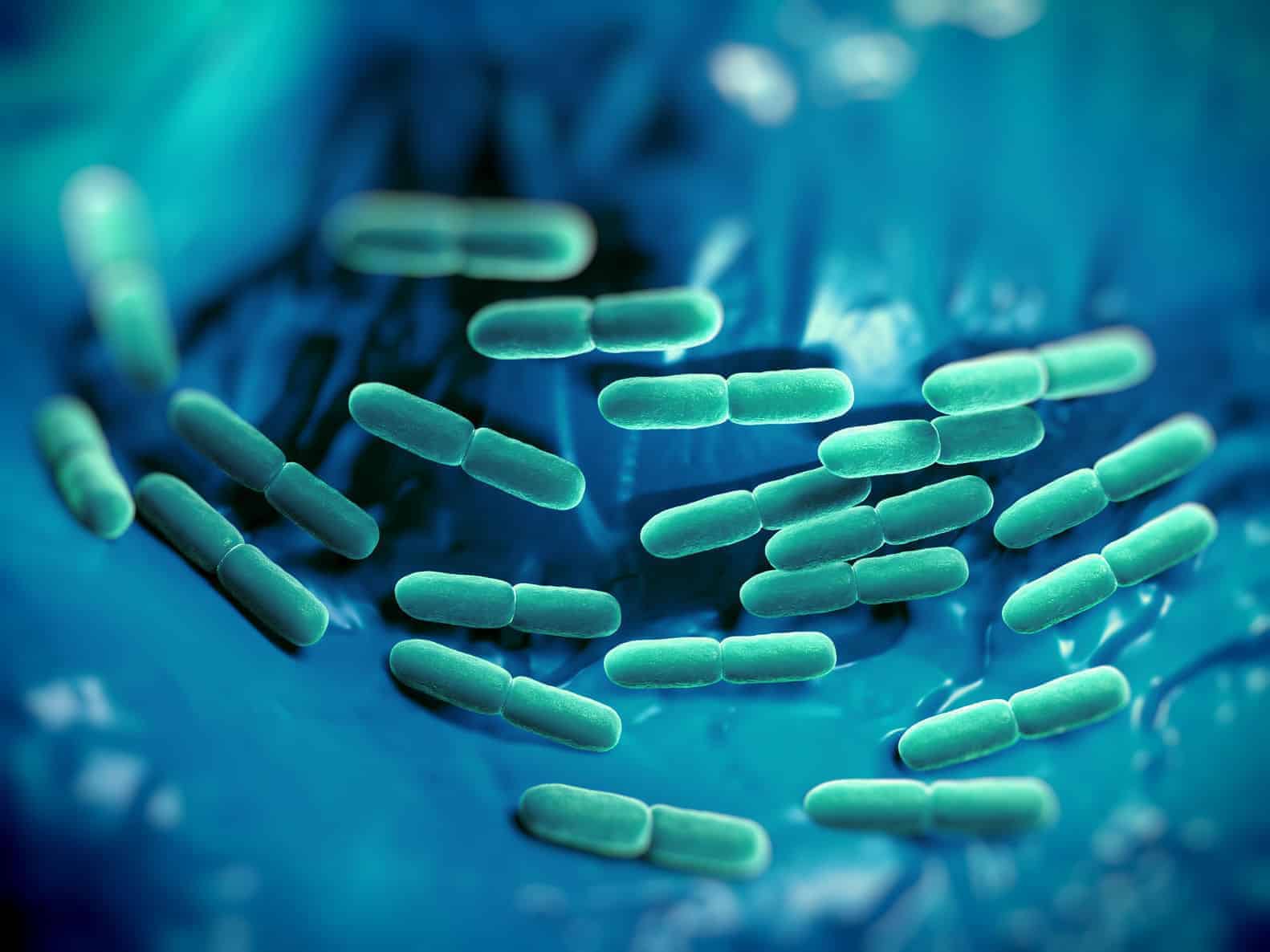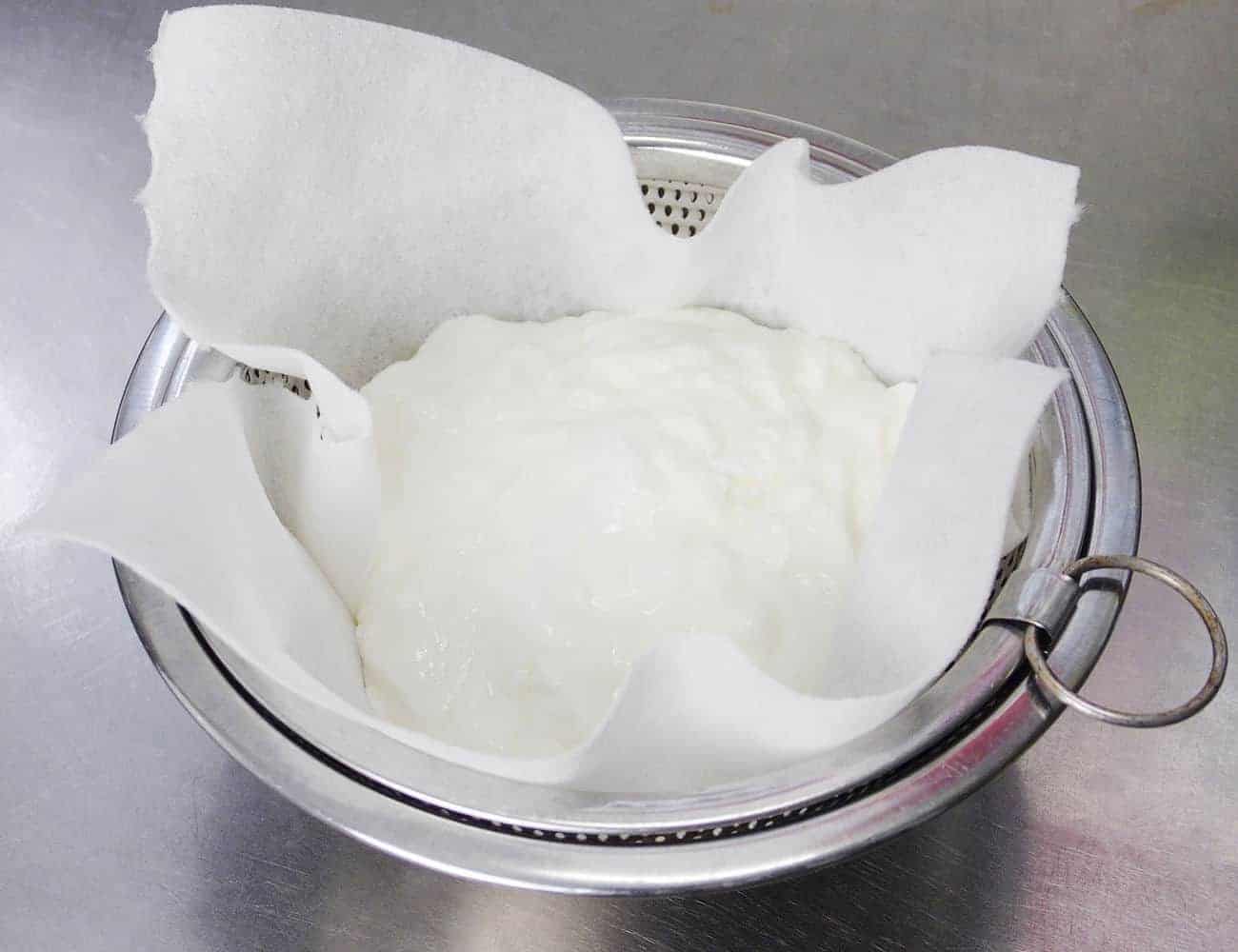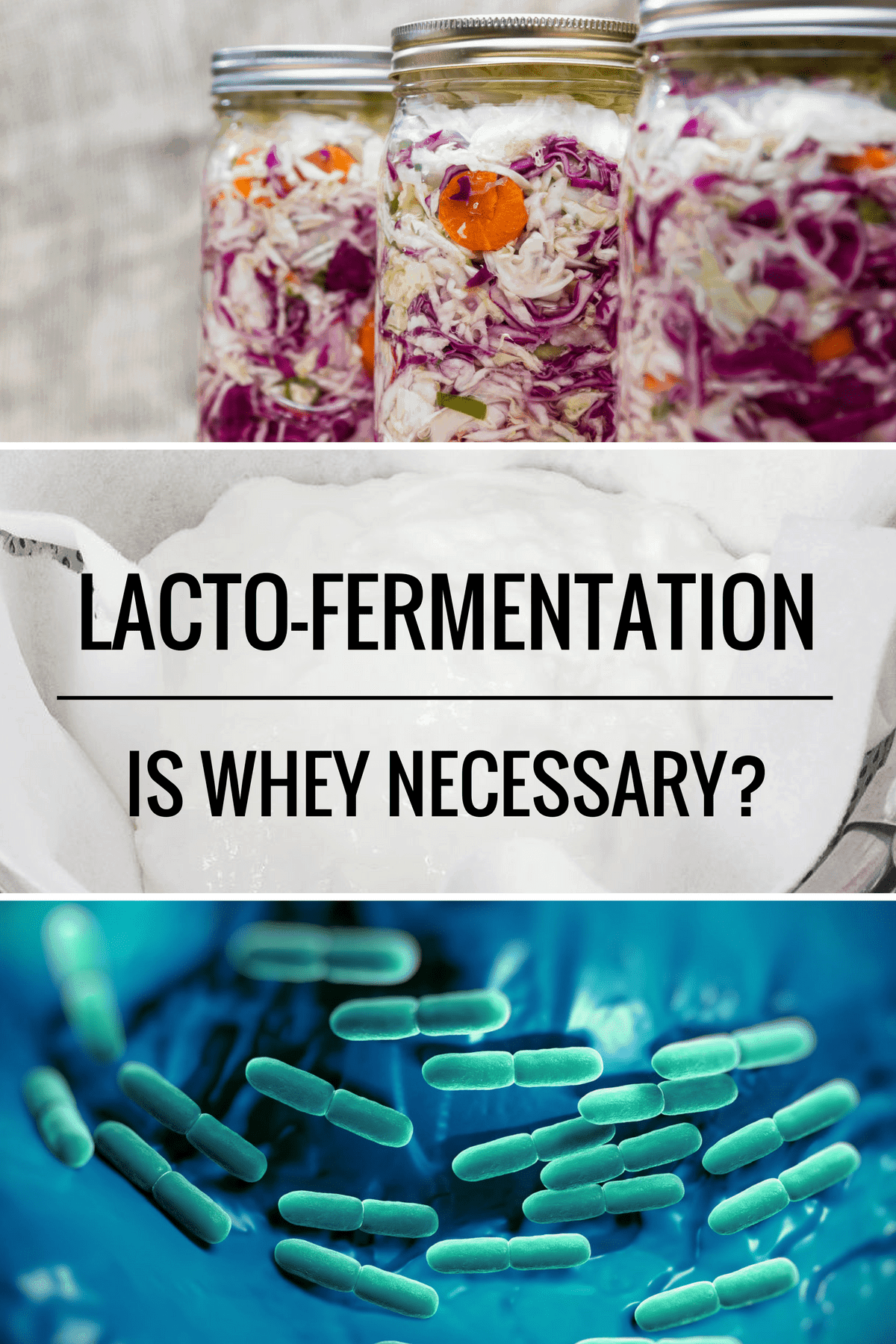Where Can I Find Whey For Fermenting Near Me
Today's post is inspired past a reader question that came in from Adam. Adam wrote:
I've been researching lacto-fermentation and I take plant that some recipes call for whey from live and active civilization yogurt, only some people are just calculation salt and calling that lacto-fermented.
Can yous help me understand why adding the whey civilization is important and why some people don't add whey but still call it lacto-fermented? I've read a few ebooks and watched several videos on the matter and haven't found anyone that explains it.
Great question! And a surprisingly common one, thanks to a quirky botch of the language.
Let'due south start out with the near important role: you exercise not demand yogurt whey to lacto-ferment vegetables. Always. At all. There are some situations where whey or another starter culture might assist your ferment, and I'll comprehend those in a scrap, but whey isn't necessary for vegetable fermentation.
So to answer your question: why is calculation whey important? It isn't. If, in a specific recipe, whey is called for, it might be needed for that recipe, but I guarantee at that place are ways to modify that recipe to remove whey from the ingredient list if yous want.
Lacto-Fermented: What'southward In A Name?

Now onto your question most why people can phone call ferments made without whey from a dairy product lacto-fermented.
The "lacto" in this case comes from the proper name of the beneficial bacteria that preserve lacto-fermented foods, not from the addition of a dairy component in the the recipe.
These bacteria are called "Lactic Acid Bacteria." They brand lactic acid as a byproduct of eating carbohydrates. Nigh all of the microbes we want to encourage in lacto-fermentation come from this family.
The most famous bacteria grouping from within the Lactic Acid Bacteria family unit (but by no ways the only bacteria group important to fermentation) is called lactobacillus. You have probably heard the term lactobacillus before – this particular bacteria group is often mentioned in the marketing for products like yogurt.
Lactobacillus – literally "Milk Rod-shaped Leaner" – have that name because they were kickoff identified every bit the bacteria that sour milk. But wait! Lactobacillus are not express to a milk diet. At that place is some member of the clan that has evolved to happily chow down on almost any form of simple or circuitous carbohydrate and convert that carbohydrate into lactic acid.
In curt, the lacto in the term lacto-ferment refers to lactobacillus, non lactose. While lactic acid bacteria named after milk are necessary for a successful lacto-ferment, adding a dairy component to vegetable ferments is not necessary.
The LAB microbes including lactobacillus exist on any fresh vegetable. They are ubiquitous in the environs. They are already everywhere, only waiting for the right opportunity to start eating carbs and making lactic acid. Y'all don't accept to practice anything special to innovate them.
In conclusion, people who claim that whey or other dairy starters are necessary to ferment vegetables or to call such a fermentation "lacto-fermented," are wrong. Y'all have my permission to ignore them.
The Role of Lactic Acid Leaner in Fermentation

In the right conditions, Lactic Acid Bacteria including lactobacillus consume sugars – simple or complex – and make lactic acid as a byproduct. This excreted lactic acrid is critical to the preservation of our fermented vegetables. Every bit a vegetable ferments, the increasing quantity of lactic acrid pushes the pH of the ferment lower and lower, preserving our vegetables through a natural form of lowered-pH pickling.
So what are these right atmospheric condition?
The metabolic process that results in the lactic acid we desire is anaerobic – it takes place in the absence of oxygen. And Lactobacillus adopt to stay away from nasty corrosive oxygen, anyhow. So excluding air from your fermenting vegetables is very important.
The lactic acid bacteria are too uniquely tolerant of a moderately high salt environment. Salinity levels where the LAB leaner thrive discourage other, more than harmful microbes.
Read More than: How Much Salt Should I Use For My Fermentation?
In fermentation, our task is to ready an environment – oxygen free and moderately loftier in salt – where the natural lactic acid leaner already on the vegetables will proliferate, abound, and rapidly dominate the microbial profile of the ferment.
Essentially the creation of the successful ferment is a byproduct of creating the right environs for the correct microbes. The easiest way to do this is to submerge vegetables in a brine of the proper salinity.
Why Exercise Some Recipes Call For Whey In A Lacto-Ferment?

Active culture whey or other starter cultures are jump-starters, basically. If you apply whey from a live and active lacto-fermented production like yogurt or a naturally fermented sour cream, you're introducing a pre-grown, ready-to-go colony of billions of friendly, viable lactic acid bacteria to your ferment. This tends to make the ferment move a lot faster, and can aid ensure you create an environment dominated by beneficial bacteria quickly.
Any homebrewers out there will understand this concept. Information technology's like the difference betwixt pitching a packet of dry yeast into a carboy, vs growing out a yeast starter the day before and pitching that in. With an active, huge, bubbling colony of yeast, your fermentation in the carboy is going to start faster and stronger.
All the same, in the instance of lacto-fermentation, faster isn't always better. Many fermenters, myself included, have actually constitute that salt-only, slower ferments can lead to a better long-term texture and flavor in a ferment.
Just, at that place are cases where yous might want to spring start your lactic acid bacteria and give the whole thing a boost. If you are planning a very fast ferment, something that volition exist on the counter for simply a couple days, a starter can exist very helpful.
If you are fermenting something really thick and condimenty – like ketchup or chutney – adding that extra boost of lactic acrid leaner can be helpful considering without a proper brine – either an added alkali or a self-alkali, the lactic acid will accept a hard time colonizing the ferment.
And then at that place's the consequence of salt. Y'all can reduce the salt levels in your ferment – down to about 1/two the level you'd otherwise want – if y'all incorporate a big kicker of starter along with the salt. This is because, if y'all are already rug bombing your ferment with the leaner y'all want, you lot don't have to worry quite so much nearly setting upward an environment that favors ONLY the lactic acid, salt-tolerant bacteria.
Conversely, you lot tin can typically accept whatever whey-inclusive ferment and adjust the salt in such a way as to no longer need that whey jump starter. For more information about exactly how much common salt to add if you desire to skip whey birthday, check out this article.
Concluding Thoughts On Using Whey In A Ferment

When it comes to adding whey to ferments, I really don't anymore. I don't think at that place's much advantage compared to a salt-only ferment for 99% of the ferments I brand, and I have come up to prefer the texture and longevity of higher-salt, non-whey ferments.
In add-on, I have become skeptical of how much benefit there is to addingdairy ferment starters to vegetable ferments, given that yogurt ferments at warmer ideal temperatures than vegetables. Personally, if I needed a starter culture for a catchy ferment, like ketchup, I would expect to the brine from an already established, successful vegetable ferment (like traditional sour pickles for example) earlier using yogurt whey.
If y'all have a situation where a microbial power boost makes sense, and yous want to apply whey, delight remember that to have whatsoever do good at all, your whey must come up from something similar yogurt that is already lacto-fermented. In that location is absolutely no reward to adding whey from a dairy production that isn't already fermented.
For example, if you make fresh cheese you'll end upwardly with a TON of whey. I've seen recipes that call for whey from making ricotta to be added to lacto-ferments. This makes absolutely no sense. There are no additional beneficial lactic acid bacteria in whey from an unfermented, pasteurized dairy product.
Do you add whey to your lacto-ferments? Why or why not?
• • •
Share or Save For Subsequently

• • •
Want To Inquire Me A Question?
Information technology's easy, and I dearest it when you lot requite me fun things to write about! Just follow these steps to brand information technology easier for me to answer your question:
- Send me an electronic mail with "Question for Erica" in the discipline line.
- Ask your question in one or two sentences.
- Start a new paragraph and provide whatever additional details that are relevant to your question.
If your question has broad applicability and I can answer information technology, I'll do my all-time to cover it in a post similar this.
This question originally came to me in my recurring part as an Expert Quango Member on The Survival Podcast. My Skilful Quango answers to productive homekeeping and food preservation questions tin can exist constitute on selected Survival Podcast episodes.

25
Source: https://nwedible.com/is-whey-necessary-for-lacto-fermentation/
Posted by: prevostnotheires.blogspot.com

0 Response to "Where Can I Find Whey For Fermenting Near Me"
Post a Comment